Annual cicadas of Kansas (KS):
All cicadas appear every year unless otherwise noted.
Beameria venosa (Uhler, 1888)
Cicadettana calliope calliope (Walker, 1850) aka Southern Grass Cicada
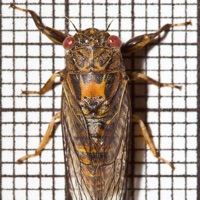
Cicadettana kansa (Davis, 1919)
Diceroprocta azteca (Kirkaldy, 1909) aka Scrub Cicada
Diceroprocta eugraphica (Davis, 1916) aka Scrub Cicada
Hadoa bifida (Davis, 1916)
Megatibicen grossus (Fabricius, 1775) aka Northern Dusk Singing Cicada formerly Megatibicen auletes
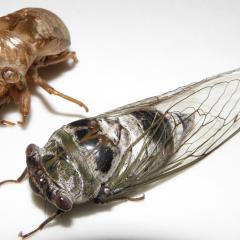
Megatibicen dorsatus (Say, 1825) aka Bush Cicada or Grand Western or Giant Grassland Cicada
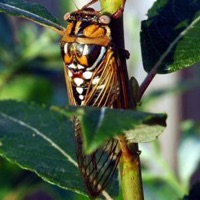
Megatibicen pronotalis walkeri Metcalf, 1955 aka Walker’s Cicada
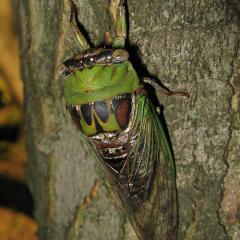
Megatibicen tremulus Cole, 2008 aka Bush Cicada
Neocicada hieroglyphica hieroglyphica (Say, 1830) aka Hieroglyphic Cicada

Neotibicen auriferus (Say, 1825) aka Plains Dog-day Cicada
Neotibicen pruinosus fulvus Beamer, 1924 aka Yellow morph of Scissor Grinder
Neotibicen pruinosus pruinosus (Say, 1825) aka Scissor(s) Grinder
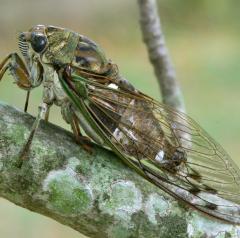
Neotibicen robinsonianus Davis, 1922 aka Robinson’s Annual Cicada or Robinson’s Cicada
Neotibicen tibicen tibicen (Linnaeus, 1758) aka Swamp Cicada, Morning Cicada
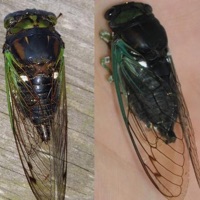
Okanagana balli Davis, 1919
Okanagana hesperia (Uhler, 1872)
Okanagana striatipes (Haldeman, 1852)
Okanagana synodica synodica (Say, 1825) aka Walking Cicada
Periodical cicadas of Kansas (KS):
Magicicada cassinii (Fisher, 1852) aka Cassini Periodical Cicada or 17-Year Cicada
These cicadas will next emerge in 2032 (Brood IV). They often emerge 1 or 4 years earlier than expected.
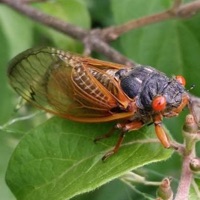
Magicicada neotredecim Marshall and Cooley, 2000 aka 13 Periodical Cicada or 13-Year Cicada
These emerge next in 2024 (Brood XIX). They often emerge 1 or 4 years earlier than expected.
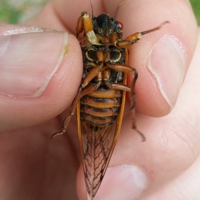
Magicicada septendecim (Linnaeus, 1758) aka Decim Periodical Cicada or Linnaeus’s 17-Year Cicada or 17-Year Cicada
These cicadas will next emerge in 2032 (Brood IV). They often emerge 1 or 4 years earlier than expected.
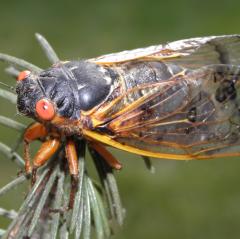
Magicicada septendecula Alexander and Moore, 1962 aka Decula Periodical Cicdada or 17-Year Cicada
These cicadas will next emerge in 2032 (Brood IV). They often emerge 1 or 4 years earlier than expected.
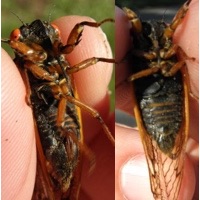
Magicicada tredecassini Alexander and Moore, 1962 aka 13-Year Cicada or 13-Year Cassini
These emerge next in 2024 (Brood XIX). They often emerge 1 or 4 years earlier than expected.
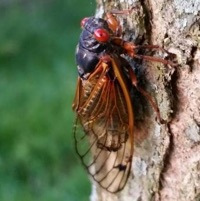
Magicicada tredecim (Walsh and Riley, 1868) aka 13-Year Cicada or 13-Year Decim
These emerge next in 2024 (Brood XIX). They often emerge 1 or 4 years earlier than expected.
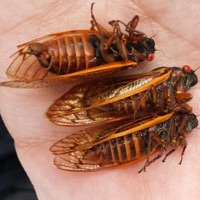
Magicicada tredecula Alexander and Moore, 1962 aka 13-Year Cicada or 13-Year Decula
These emerge next in 2024 (Brood XIX). They often emerge 1 or 4 years earlier than expected.
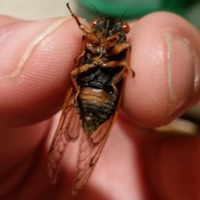
Related Articles
- Magicicada in Kansas
- Brood IV, the Kansan brood, will emerge in 2015
- Brood XXIII, the Lower Mississippi Valley brood, will emerge in 2015
Name and Location References:
- Full Binomial Names: ITIS.gov
- Common names & locations: BugGuide.net; iNaturalist.com; The Songs of Insects by Lang Elliott and Wil Herschberger; my personal memory.
- Locations: Biogeography of the Cicadas (Hemiptera: Cicadidae) of North America, North of Mexico by Allen F. Sanborn and Polly K. Phillips.
- List of species with MAPs: Biogeography of the Cicadas (Hemiptera: Cicadidae) of North America, North of Mexico [PDF] by Allen F. Sanborn and Polly K. Phillips. Download it once; treasure it forever.
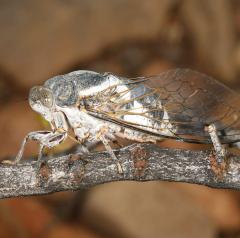
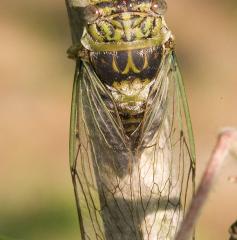
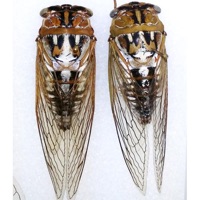
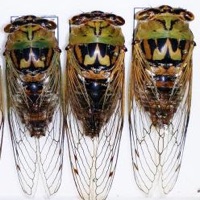
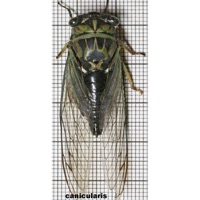
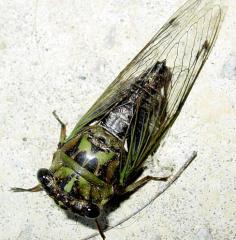
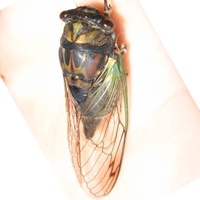
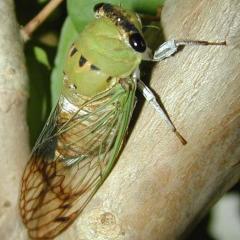
One reply on “Common cicadas of Kansas”
Dan-
Thank you for this article!! I live in Kansas and I am attempting to ID the cicadas I’m seeing this year. It’s fun, my dad is a nature lover and I’m one of the few women in my area that is not afraid the bugs. My cat, Lolly, often catches them and brings them inside just sitting there waiting for it to buzz in her mouth then she walks thru the house making her sister jealous!! This year she caught a very beautiful green-blue hued cicada and since then I have been looking at the ones that fly to my porch. Yesterday one fly into the building I work at and it was yellow/black patterned. Of coarse, I had brought in a blue-green one a few weeks prior to show my friend how pretty it was. So this one made me scratch my head, and start googling cicada broods. You have some great info. Of coarse I had to read the article about them biting, I only noticed that protrusion of theirs this year and I was alarmed I had never noticed it before. I read the funny comments. But I’m not going to stop trying to show people their beauty. Their wings are amazing. I’m noticing the different colors and patterns on their wings too. Again thank you for the great info. If I spot a different color/pattern than I see here, I’ll send it to you for your records.
My yards has 3 huge maple trees. And I now understand why I see their shells on my house.